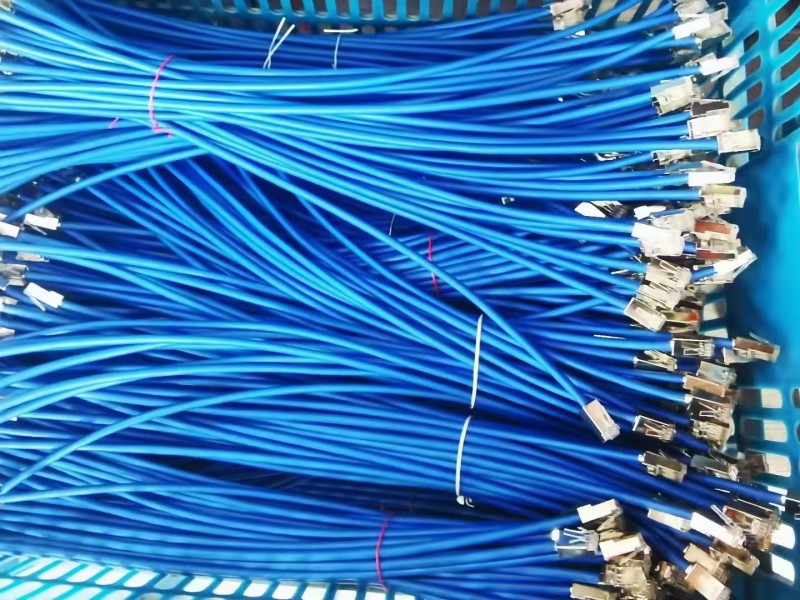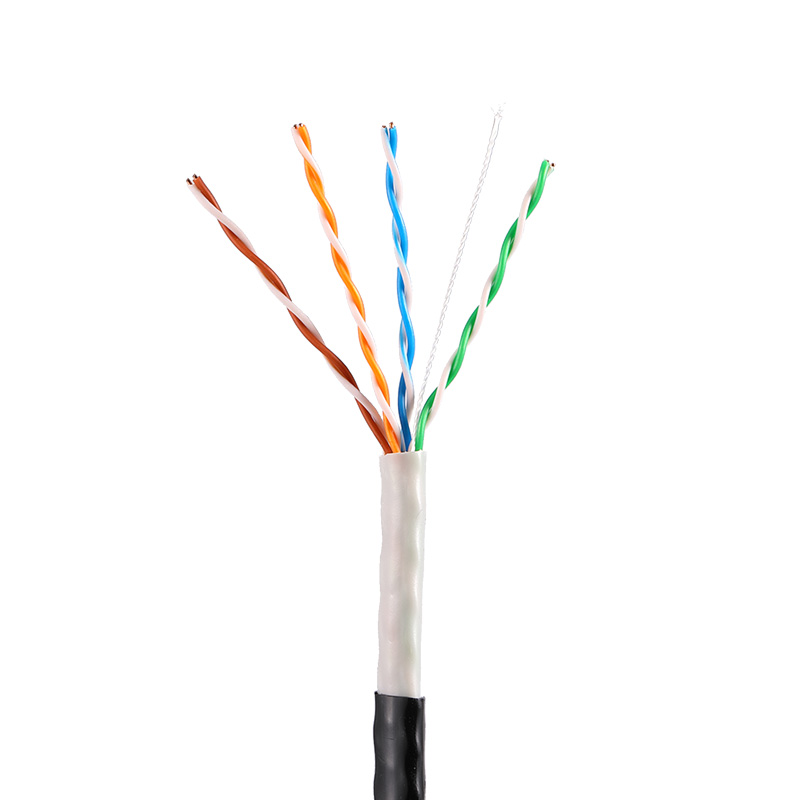Table of Contents
Understanding the Difference Between Cat 5e and Cat 6 Ethernet Cables
Understanding the Difference Between Cat 5e and Cat 6 Ethernet Cables
In the realm of networking, the choice of Ethernet cables plays a critical role in determining the speed, reliability, and overall performance of a network. Among the myriad of options available, Cat 5e and Cat 6 cables stand out as two popular choices, each with its own set of characteristics and applications.
Cat 5e, short for Category 5e, and Cat 6, short for Category 6, are both standards for twisted pair Ethernet cables used in network infrastructure. While they may seem similar at first glance, there are significant differences between the two that can impact their suitability for specific networking needs.
First and foremost, the primary distinction between Cat 5e and Cat 6 cables lies in their performance capabilities, particularly in terms of data transmission speeds and bandwidth. Cat 5e cables are capable of supporting speeds up to 1 gigabit per second (Gbps) and have a bandwidth of 100 megahertz (MHz). On the other hand, Cat 6 cables offer higher performance, with support for speeds up to 10 Gbps and a bandwidth of 250 MHz. This enhanced performance makes Cat 6 cables better suited for high-speed networking applications, such as streaming high-definition video or transferring large files.

Another key difference between Cat 5e and Cat 6 cables is their construction and internal wiring. Cat 6 cables typically feature tighter twists and better insulation compared to Cat 5e cables, resulting in reduced crosstalk and interference. This improved design helps maintain signal integrity and minimizes the risk of data errors or packet loss, especially in environments with high Levels of electromagnetic interference (EMI).
Moreover, Cat 6 cables often incorporate more stringent manufacturing standards and higher quality materials, which can contribute to greater durability and longevity compared to Cat 5e cables. While both types of cables are generally suitable for indoor use, Cat 6 cables may offer better resistance to environmental factors such as moisture, heat, and UV radiation, making them a preferred choice for outdoor or industrial applications.
Despite these differences, it’s essential to consider the specific requirements of your network before choosing between Cat 5e and Cat 6 cables. For many typical home or small office setups, Cat 5e cables may provide sufficient performance at a lower cost. However, for organizations or installations where high-speed connectivity and future-proofing are paramount, investing in Cat 6 cables may be a worthwhile decision.
It’s also worth noting that the performance of Ethernet cables can be influenced by various factors, including cable length, termination quality, and network equipment compatibility. Therefore, even if you opt for Cat 6 cables, ensuring proper installation and maintenance practices is crucial to maximizing their effectiveness.
In conclusion, while Cat 5e and Cat 6 Ethernet cables share some similarities, such as their twisted pair design and RJ45 Connectors, they differ significantly in terms of performance, construction, and suitability for specific applications. By understanding these differences and assessing your networking requirements, you can make informed decisions when selecting the appropriate cable type for your network infrastructure. Whether it’s for a home network, office Environment, or industrial facility, choosing the right Ethernet cable can make a substantial difference in the overall performance and reliability of your network.
Exploring Low Smoke Halogen-Free Network Cable Options from Chinese Suppliers
When it comes to networking, the choice of ethernet cable can significantly impact performance and reliability. Two common options are Cat 5e and Cat 6 cables, each with distinct characteristics suited to different needs. Understanding the differences between them is crucial for making informed decisions, especially when sourcing from Chinese suppliers who offer various specifications, including low smoke halogen-free options.
| Number | Product |
| 1 | rj45 wiring cable |
Cat 5e, or Category 5e, cables have been a staple in networking for years. They are capable of transmitting data at speeds up to 1 Gigabit per second (Gbps) over distances of up to 100 meters. Cat 5e cables are suitable for most home and small business networks, providing reliable performance for everyday use. However, as technology advances and demand for faster data transfer speeds increases, Cat 5e cables may not be sufficient for some applications.
Enter Cat 6 cables, the next step in ethernet cable evolution. Cat 6 cables are designed to support higher data transfer speeds and are capable of transmitting data at speeds up to 10 Gbps over shorter distances, typically up to 55 meters. This makes Cat 6 cables ideal for demanding environments where high-speed data transmission is essential, such as large offices, data centers, and industrial settings.
One of the key differences between Cat 5e and Cat 6 cables lies in their construction and specifications. Cat 6 cables are built with stricter standards and higher-quality materials to ensure better performance and reduced signal interference. They typically have thicker Copper conductors and more stringent twisting of pairs to minimize crosstalk and signal degradation.
Another important consideration is the use of low smoke halogen-free materials in network cables, especially in environments where fire Safety is a concern. Traditional PVC cables emit toxic fumes when exposed to fire, posing health risks to people and damage to equipment. Low smoke halogen-free cables, on the other hand, produce minimal smoke and toxic gases when burned, making them safer for both humans and the environment.
Chinese suppliers offer a wide range of low smoke halogen-free network cables to meet various requirements and specifications. These cables are manufactured using high-quality materials and adhere to international standards for performance and safety. Whether you need Cat 5e or Cat 6 cables, customized options are available to suit your specific needs and budget.
When sourcing low smoke halogen-free network cables from Chinese suppliers, it’s essential to consider factors such as quality, reliability, and compliance with industry standards. Look for suppliers with a proven track record of delivering high-quality products and excellent customer service. Ensure that the cables meet relevant certification requirements, such as UL, CE, and RoHS, to guarantee their safety and performance.
In conclusion, the difference between Cat 5e and Cat 6 ethernet cables lies in their speed, performance, and construction. Cat 5e cables are suitable for basic networking needs, while Cat 6 cables offer higher speeds and better performance for demanding applications. When sourcing low smoke halogen-free network cables from Chinese suppliers, prioritize quality, reliability, and compliance with industry standards to ensure optimal performance and safety.
Customizing Low Smoke Halogen-Free Network Cables: Factory Solutions for Your Needs
When it comes to networking, the choice of Ethernet cables can significantly impact the performance and reliability of your network infrastructure. Two commonly used types of Ethernet cables are Cat 5e and Cat 6. While they may appear similar at first glance, there are notable differences between the two that can affect your network’s capabilities.
Cat 5e, short for Category 5e, and Cat 6, short for Category 6, are both twisted pair cables used for carrying signals, particularly Ethernet data transmissions. However, the key disparities lie in their specifications and performance capabilities.
Cat 5e cables are an enhanced version of the original Cat 5 cables. They support Gigabit Ethernet speeds up to 1000 Mbps and are suitable for most home and small office networks. These cables are capable of transmitting data over short to medium distances with minimal interference.
| Number | Article Name |
| 1 | Large Electrical Telephone Logarithmic Cable |
On the other hand, Cat 6 cables offer higher performance and faster data transmission rates compared to Cat 5e. They can support data transfer speeds of up to 10 Gbps over short distances of up to 55 meters. Cat 6 cables are ideal for demanding applications and environments where high bandwidth is crucial, such as large enterprises and data centers.
One of the main differences between Cat 5e and Cat 6 cables lies in their construction and design. Cat 6 cables typically have tighter twists and better shielding than Cat 5e cables, which helps reduce crosstalk and electromagnetic interference. This enhanced design allows Cat 6 cables to maintain higher data transmission speeds over longer distances compared to Cat 5e cables.

Another factor to consider is the cost. Cat 6 cables are generally more expensive than Cat 5e cables due to their advanced specifications and materials. However, the investment in Cat 6 cables can pay off in the long run, especially for businesses that require high-speed and reliable network connections.
When deciding between Cat 5e and Cat 6 cables, it’s essential to consider your specific networking requirements and budget constraints. If you need to future-proof your network and anticipate higher bandwidth demands, investing in Cat 6 cables may be a wise decision. However, if your network needs are more modest and cost-effectiveness is a priority, Cat 5e cables may suffice for your applications.
In summary, the primary differences between Cat 5e and Cat 6 Ethernet cables lie in their performance capabilities, construction, and cost. Cat 6 cables offer higher data transmission speeds and better performance over longer distances compared to Cat 5e cables, making them suitable for demanding network environments. However, Cat 5e cables remain a viable option for less bandwidth-intensive applications where cost-effectiveness is paramount. Ultimately, the choice between Cat 5e and Cat 6 cables depends on your specific networking needs and budget considerations.
